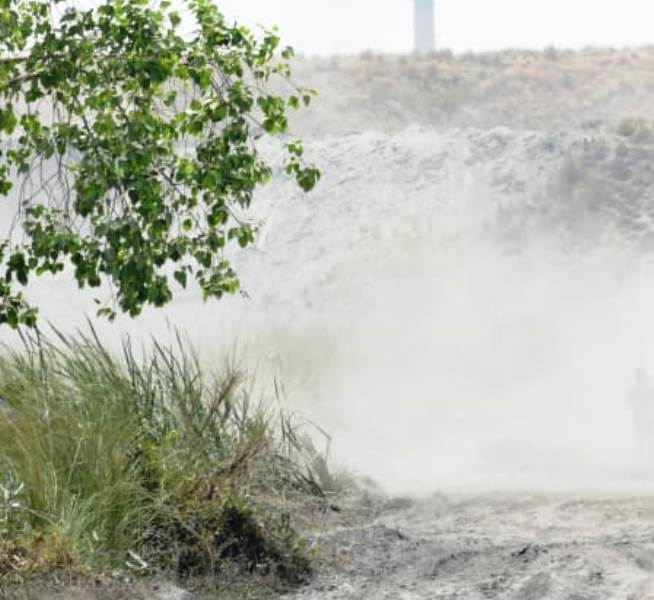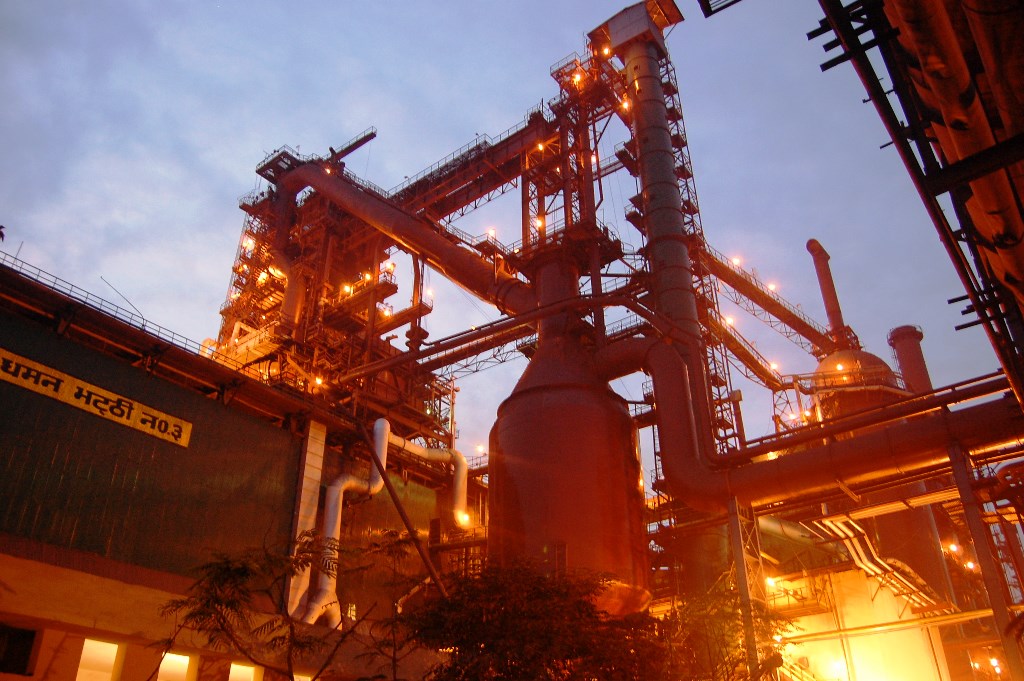Bokaro: Fly ash produced in Bokaro Power Supply Company Private Limited (BPSCL) and dumped around Bokaro Steel Plant (BSL) is severely polluting the environment because it isn’t used effectively. In spite of a circular issued by BSL top management, which instructs the use of fly ash bricks in construction activities, it is not being implemented due to a lackadaisical approach by officials, which causes environmental damage.
BPSCL’s ash, both fly ash and bottom ash, continues to be a concern for residents living in villages situated in fringes of the BSL plant. Approximately half a dozen villages are most affected. Local residents say they suffer due to BSL management’s neglectful attitude. BSL and BPSCL officials are not serious about utilizing fly ash which are produced every day in huge quantities and disposed of in the open. After being dumped, a mound of fly ash appeared on the edge of the BSL plant, causing air pollution in villages.
“Sometimes fly ash storms blow along with heat waves in this summer, making survival very difficult for residents of the villages Modidih, Maheshpur, Kanchanpur, Chaitataad, and others. Even when our windows are closed, fly ash dust enters our homes,” said Ganesh Saw, a Mahuar resident.
BPSCL, a joint venture of SAIL and DVC, provides all the electricity and steam to Bokaro Steel Plant (BSL). The 302 MW BPSCL’s power plant situated inside BSL plant produces around 6 lakh tonnes of flyash annually. BSL, which claimed to be working aggressively on waste management, failed to utilise bottom and fly ash.
BPSCL has installed a fly ash brick manufacturing facility inside the plant, but it only produces about two thousand bricks (one tractor) per day. In the past, NHAI used fly ash for filling low lying areas during highway construction, but that stopped when the project was almost complete.

As per Central Government Notification from Ministry of Environment and Forest, Fly Ash produced from thermal power plants should be utilized in the form of fly ash bricks in all construction activities in the surrounding areas. This has been made mandatory. In this respect, former executive director (Projects), Ravi Varma M had issued circular on June, 11, 2014.
The circular issued by Varma mentioned “considering the huge amount of construction activities being done in BSL, It has now been decided that we shall plan and encourage use of Fly Ash Bricks only, for all brickworks to be constructed thereafter. These shall apply to all cases being handled by Project Department except possibly where these fly ash bricks are either not considered technically suitable or are not available”.

The circular also has instruction that “Project Managers, looking after various civil engineering activities, may take note of the above and explore the possibilities of the use of such bricks wherever possible. This would be our humbly contribution to project and upgrade the environment around”. However, red bricks continue to be used despite this in all the big and small projects of BSL.
Also in the residential township, BSL officials ignore the instruction and use red bricks for construction, renovation, expansion, and beautification. If BSL only grows seriously, fly ash utilization problems will be solved to a large extent, reducing pollution levels. Many development projects are being undertaken each year in BSL that could use large quantities of fly ash bricks,” said Vikram, a resident of a displaced village.
—————————
Chief of communication, BSL, Manikant Dhan-
“around 2000 fly ash bricks on an average are being made by BPSCL per day, all of which are consumed in civil works in the plant. NHAI is one major customer which takes it regularly for its road construction projects. One rake per month (average) being sent to Darsana since December, 2021. Fly ash being used for filling of low lying areas. Very recently, Bio-stabilization of fly ash mounds has been started by BPSCL plantation of vetiver grasses”.
—————————–
Chief executive officer, BPSCL, K K Thakur-
“Efforts are being laid for maximum utilisation of fly ash by manufacturing fly ash bricks. We had also exported two railway racks of fly ash to Bangladesh in past months. Green grasses are being laid on the fly ash mounds “.
———————————
Chairman of Jharkhand State Pollution Control Board (JSPCB), A K Rastogi-
“We are looking into the matter”.

Ministry of Environment and Forest had issued notification for use of fly ash, bottom ash and pond ash in construction activities:
“(1A) Every construction agency engaged in the construction of buildings within a radius of hundred kilometers (by road) from a coal or lignite based thermal power plant shall use only fly ash based products for construction, such as cement/concrete, fly ash bricks or blocks or tiles or clay fly ash bricks, blocks or tiles or cement fly ash bricks or bricks or blocks or similar products or a combination or aggregate of them in every construction project”
According to a survey, about 500 million tonnes of coal is consumed annually by 140 thermal power plants in the country, which annually generates 235 million tonnes of fly ash. It is projected to exceed by 1000 million tonnes by 2031. For electricity generation, India depends mostly 60% on coal based thermal power plants. Utilization of fly ash has become a need.





